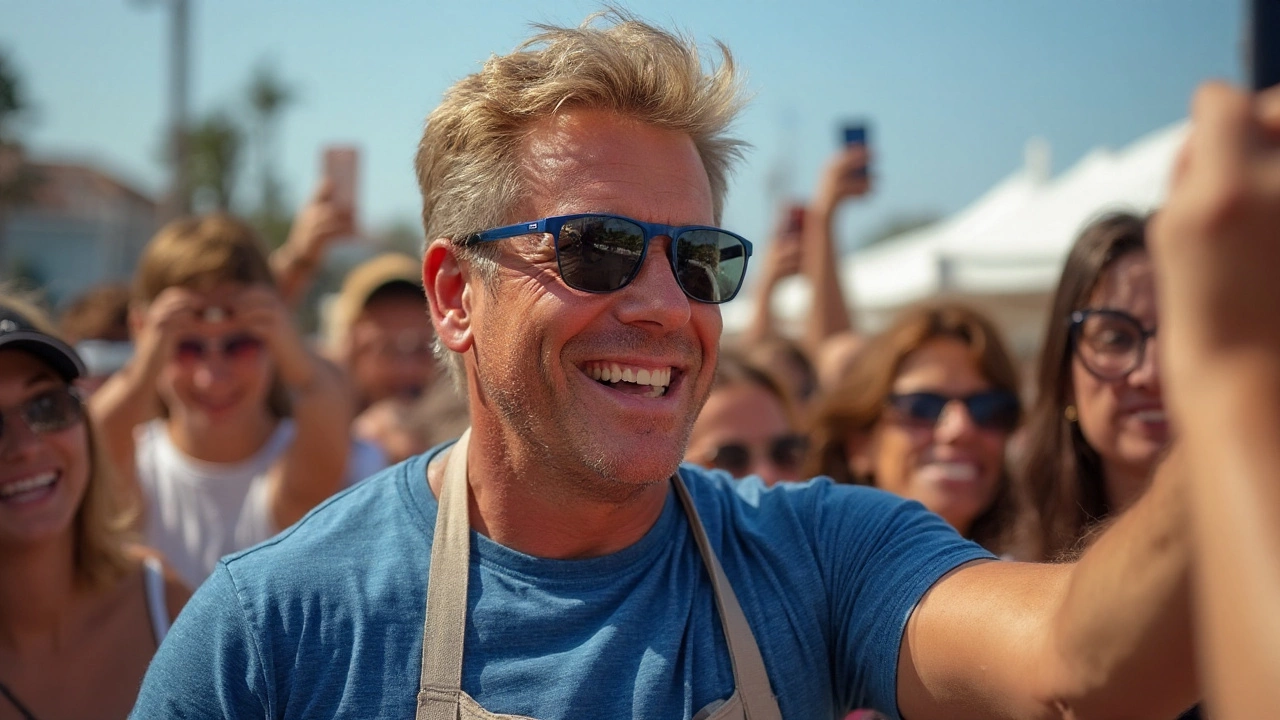Gordon Ramsay has told fans he was recently treated for skin cancer, revealing he underwent surgery to remove a Basal Cell Carcinoma from the area near his ear. In an Instagram post on August 30, the 58-year-old chef shared a photo of a wide bandage running from below his ear toward his neck and tried to head off the inevitable chatter with a joke: “I promise you it’s not a face lift! I’d need a refund…”
Ramsay thanked “the incredible team at the skin associates and their fast reactive work on removing this basal cell carcinoma,” and used the moment to push a simple message ahead of the Labor Day weekend: don’t skip your sunscreen. “Please don’t forget your sunscreen this weekend,” he wrote, turning a personal scare into a public nudge on sun safety.
The British restaurateur and TV figure has made a habit of talking plainly about health and safety. Earlier this year, a serious cycling crash left him with extensive bruising across his torso. He went public with the photos, called the incident “really” shaking, and said he was lucky to be standing—then told cyclists to wear helmets, no excuses. Now he’s doing the same with sun protection.
Ramsay’s update and recovery
The new post landed with the blunt candor fans expect from the Hell’s Kitchen and MasterChef star. The image shows a long surgical dressing placed along a spot where skin cancers commonly appear: the face and neck. Ramsay didn’t share the exact timeline of his recovery, but the tone suggested the procedure went as planned and that he’s back to business, using the platform he built on kitchen heat to talk about a different kind of burn.
Public reactions were quick and supportive. Followers praised him for not hiding the bandage and for putting prevention front and center. When high-profile figures share real-time health updates, people listen—especially when the message is as practical as sunscreen, shade, hats, and regular skin checks.
Ramsay, a father of six, has never been shy about mixing personal life and public service announcements. Whether it’s restaurant safety, home cooking basics, cycling helmets, or now SPF, he tends to boil big ideas down to a few firm rules and leave little room for excuses.
What to know about Basal Cell Carcinoma and sun safety
Basal Cell Carcinoma (BCC) is the most common form of skin cancer. It’s strongly linked to cumulative exposure to ultraviolet (UV) radiation from the sun, which helps explain why these cancers show up most often on the face, ears, neck, scalp, and forearms—places that catch daylight year-round. While BCCs are usually slow-growing and rarely spread to other parts of the body, they can invade nearby tissue if ignored, and bigger growths are tougher to treat. Early detection makes a huge difference.
How do these cancers look? BCC can appear as a pearly or translucent bump, a pink patch that keeps flaking or crusting, a sore that bleeds and doesn’t fully heal, or a scar-like area without a clear cause. The signs can be subtle, especially at first, which is why checking your skin from head to toe a few times a year is a smart habit—particularly if you spend a lot of time outdoors or have a history of burns.
Treatment depends on the size, location, and type of lesion. Dermatologists commonly remove BCCs with surgical excision or Mohs surgery, a technique that removes thin layers and examines them under a microscope as the procedure goes on. Some very small or superficial cancers can be treated with topical therapies or, in select cases, other methods your doctor might suggest. The goal is straightforward: get clean margins, minimize scarring, and prevent a recurrence.
Prevention is the part everyone can control. Dermatologists usually recommend a broad-spectrum sunscreen with at least SPF 30, applied generously to all exposed skin 15 minutes before going outside. Reapply every two hours—and after swimming, sweating, or towel-drying. Don’t forget spots like the ears, the back of the neck, the scalp if hair is thinning, the tops of the feet, and the lips (use a balm with SPF). Pair sunscreen with physical barriers: wide-brimmed hats, UV-blocking sunglasses, and lightweight UPF clothing. When you can, seek shade in peak sun hours, roughly 10 a.m. to 4 p.m.
Those tips matter year-round, not just on beach days. UV exposure adds up, whether you’re at a summer barbecue or walking the dog on a cool, cloudy afternoon. Many people assume they’re safe on overcast days, but UV can punch through cloud cover. That’s why Ramsay’s timing—right before a holiday weekend when people will be outdoors—hits home.
Who should be most vigilant? Anyone can get BCC, but risk climbs with age, fair skin, a history of blistering sunburns, frequent sun exposure for work or sports, indoor tanning, and a weakened immune system. If you spot a new growth, a changing spot, or a wound that just won’t heal, book a skin check. A quick appointment can save months of worry and, in many cases, leave you with a small scar instead of a larger surgery.
Ramsay’s message lands in that sweet spot where celebrity visibility meets everyday action. The chef known for sharp elbows in the kitchen has become a surprisingly effective messenger for safety outside it—first with a helmet after a terrifying crash, now with sunscreen after cancer surgery. It’s not about fear. It’s about habits that take seconds and pay off for decades.
For his followers, the to-do list is simple: put on sunscreen before you head out, stash a travel-size bottle in your bag or car, wear a hat when the sun is high, and set a reminder to reapply. And if something on your skin looks new, odd, or stubborn, don’t wait it out. Get it checked. As Ramsay’s latest post shows, catching a problem early can turn a scary headline into a fixable detour—and a chance to nudge millions toward better choices.
